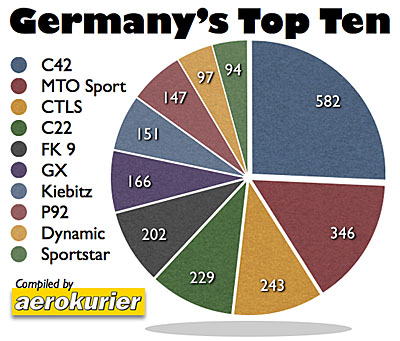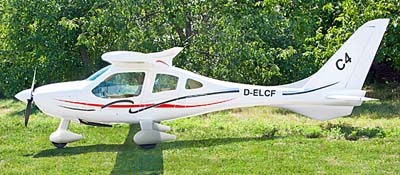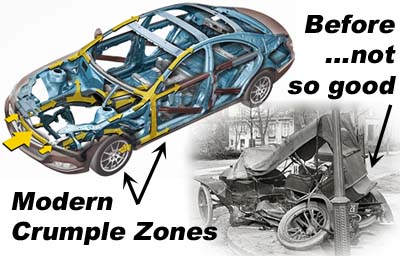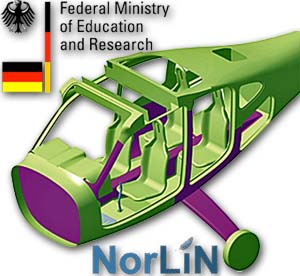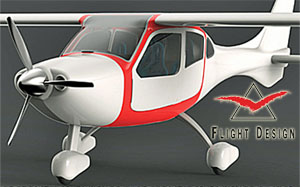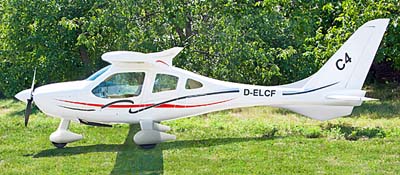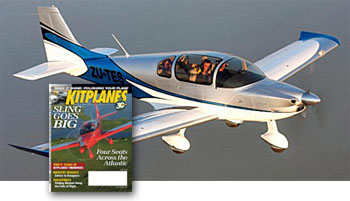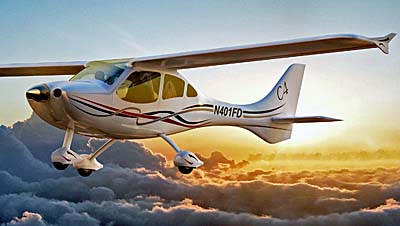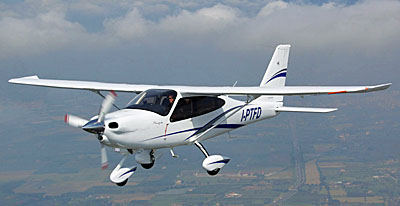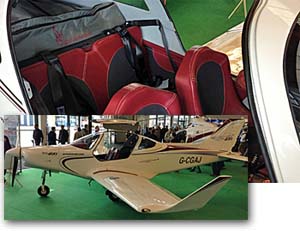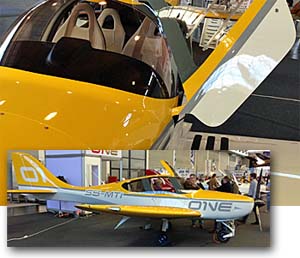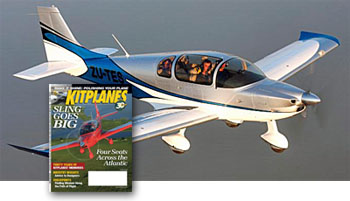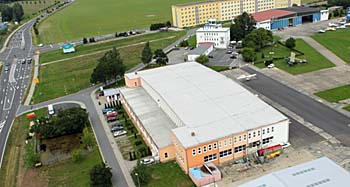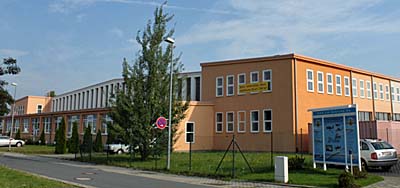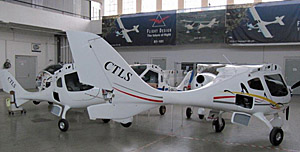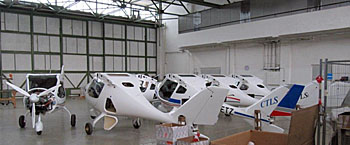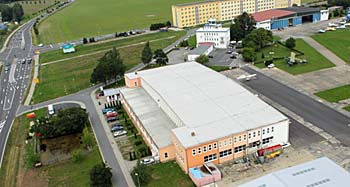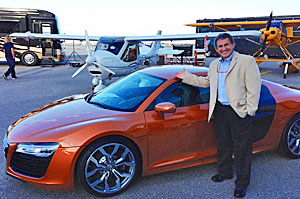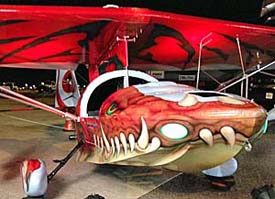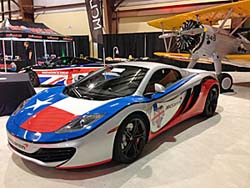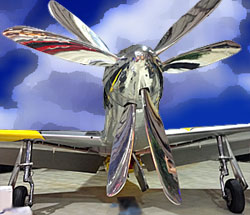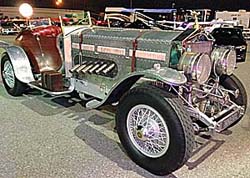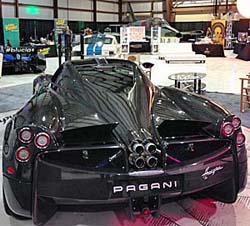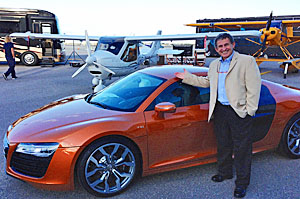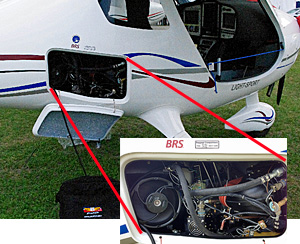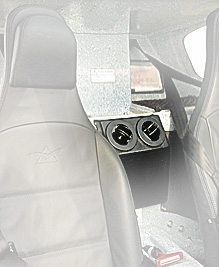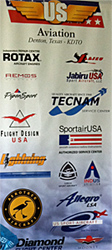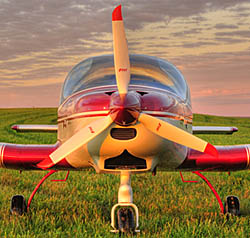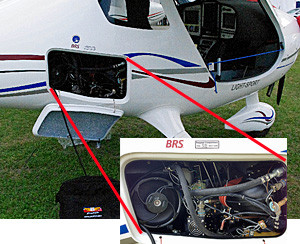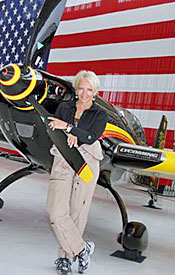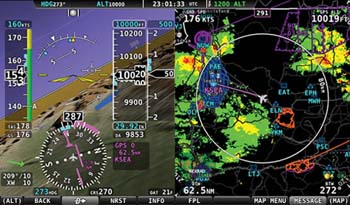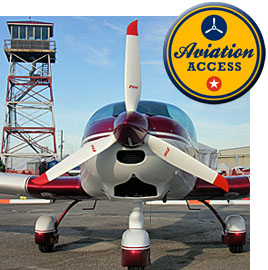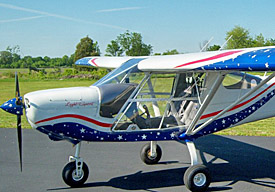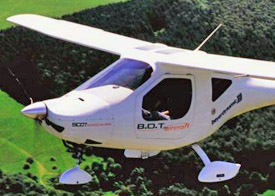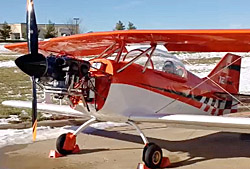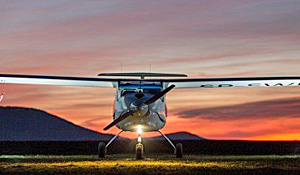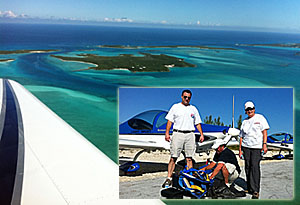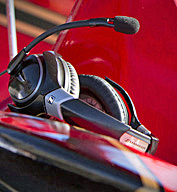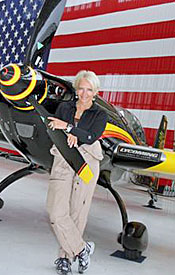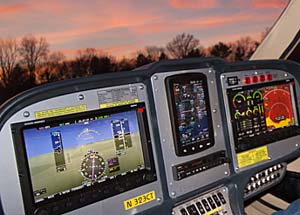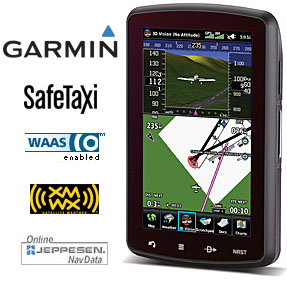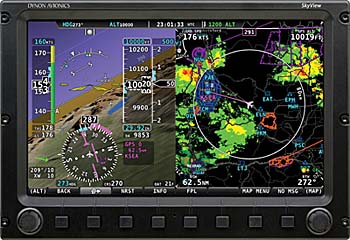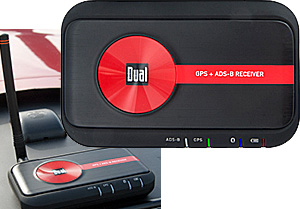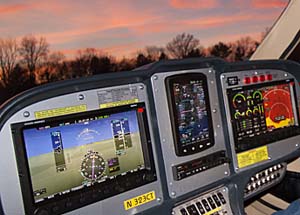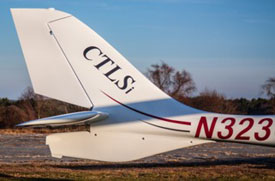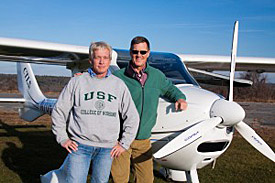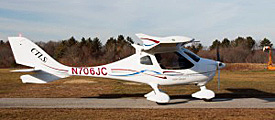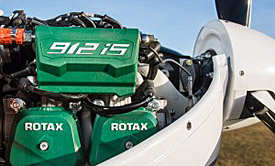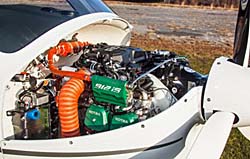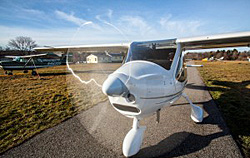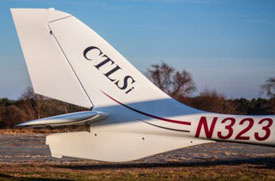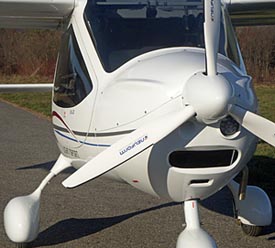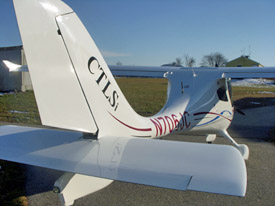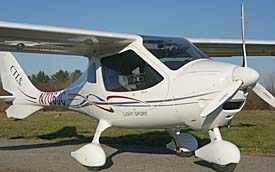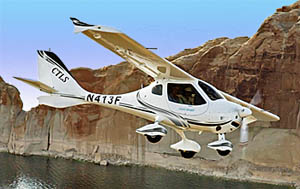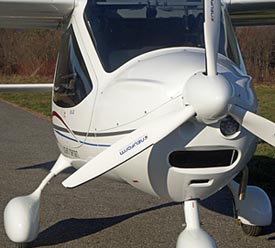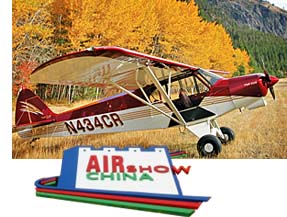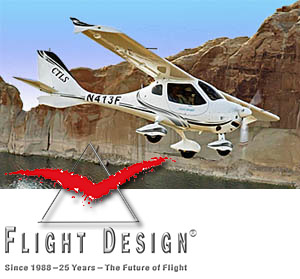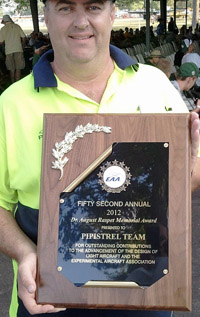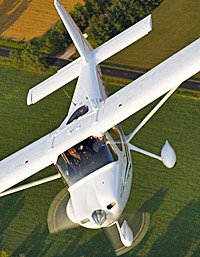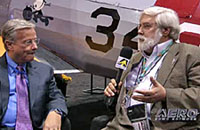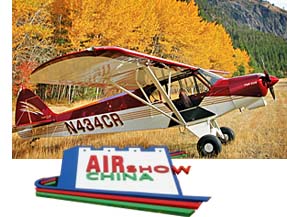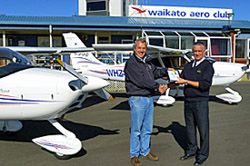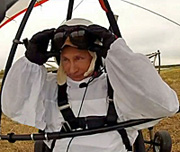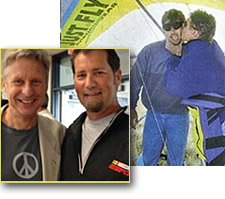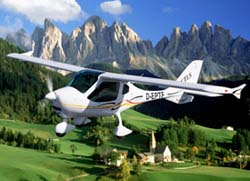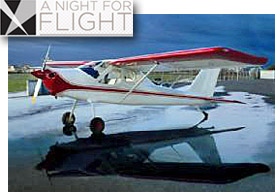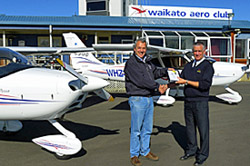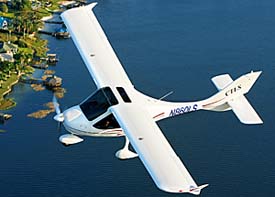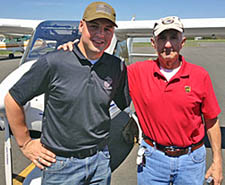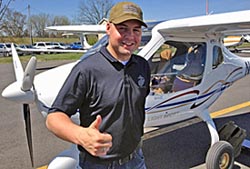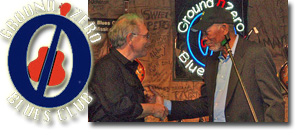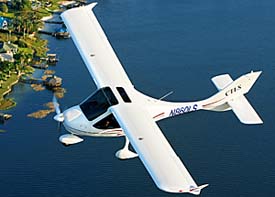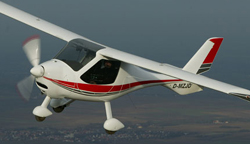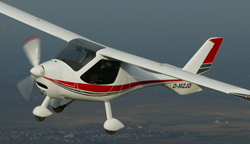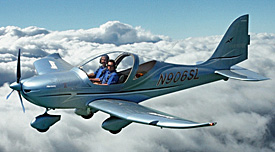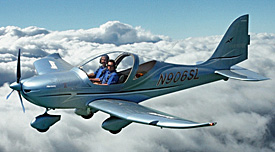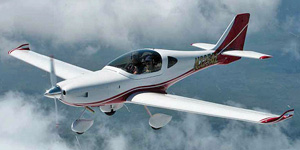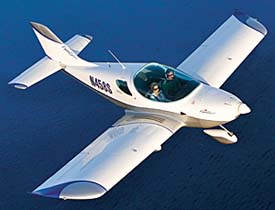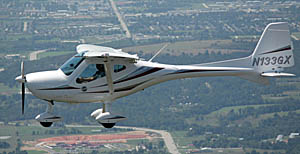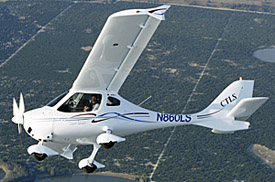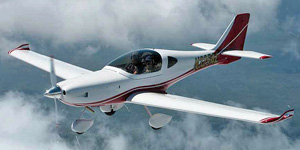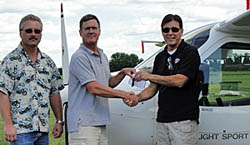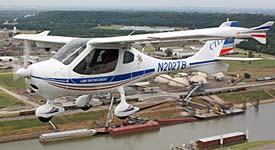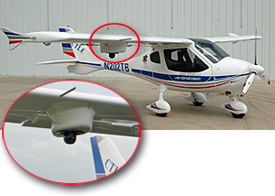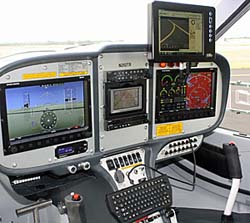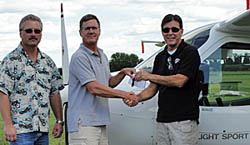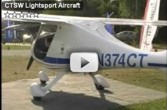
While Flight Design has released two newer models (the CTLS and all-metal MC), it was the CTsw that helped the German Flight Design company continue to be the market leader, even after four years and nearly 100 new models followed the CT series into the American market. CTsw is one of the fastest and longest flying LSA in the U.S. fleet.


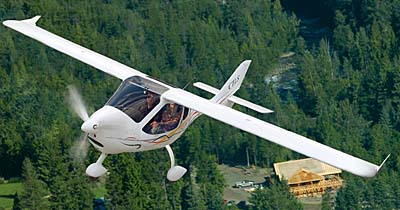
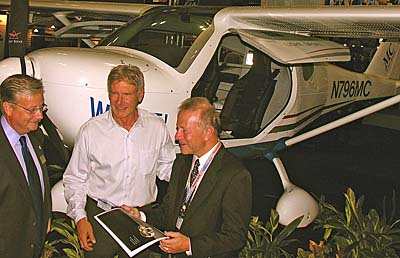
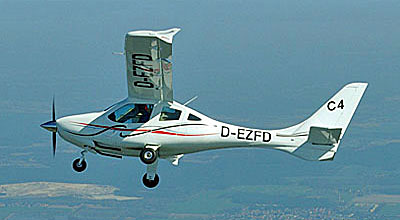
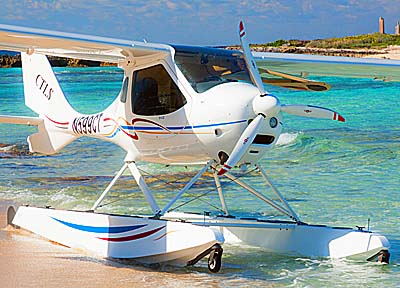
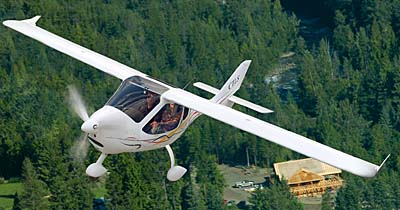
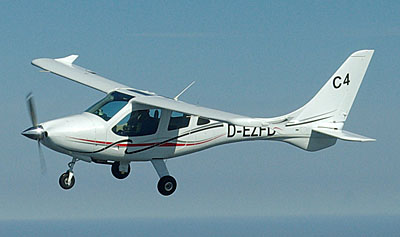
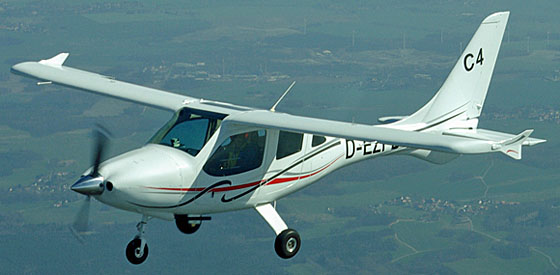
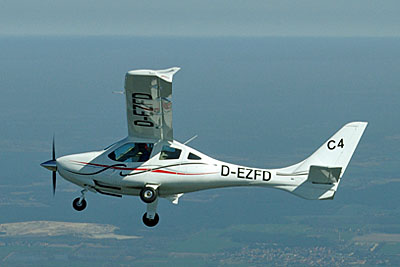
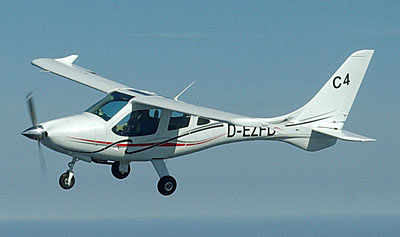
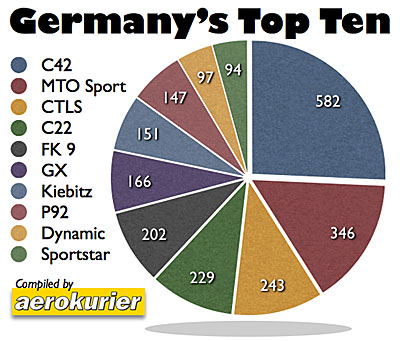 Much of what we hear and know about airplane populations is centered on America. Yet in the world of sport and recreational aviation, the rest of the world equates to at least a 1:1 relationship, that is, for every American aircraft flying, many experts agree another flies internationally. It may be more significant than that ... consider Germany.
In mid-August, our friends at Aerokurier, Germany's leading aviation magazine, assembled an
Much of what we hear and know about airplane populations is centered on America. Yet in the world of sport and recreational aviation, the rest of the world equates to at least a 1:1 relationship, that is, for every American aircraft flying, many experts agree another flies internationally. It may be more significant than that ... consider Germany.
In mid-August, our friends at Aerokurier, Germany's leading aviation magazine, assembled an 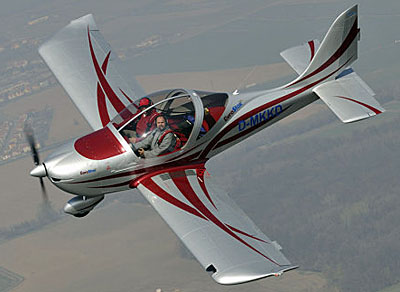 #10 — Evektor Eurostar (94 flying) — Built by
#10 — Evektor Eurostar (94 flying) — Built by 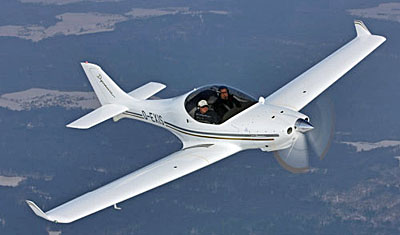 #9 — AeroSpool Dynamic (97 flying) — It's fast and belongs to the ultralight beauties at the sky. Built in Slovakia WT9 Dynamic is the epitome of a sporty composite low-wing monoplane. Capable of more than 200 km/h (125 mph) it excels at cross country flying, is comfortable, and can even tow gliders. Dynamic's flight characteristics are exemplary processing. |||| Dynamic in fixed gear form has some U.S. models flying but after Sport Aircraft Works left the business sales slowed to a stop and it never entered the Top-20 of the American LSA market.
#9 — AeroSpool Dynamic (97 flying) — It's fast and belongs to the ultralight beauties at the sky. Built in Slovakia WT9 Dynamic is the epitome of a sporty composite low-wing monoplane. Capable of more than 200 km/h (125 mph) it excels at cross country flying, is comfortable, and can even tow gliders. Dynamic's flight characteristics are exemplary processing. |||| Dynamic in fixed gear form has some U.S. models flying but after Sport Aircraft Works left the business sales slowed to a stop and it never entered the Top-20 of the American LSA market.
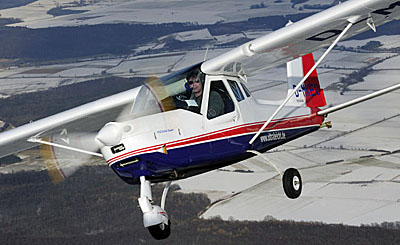 #8 — P92 (147 flying) —
#8 — P92 (147 flying) — 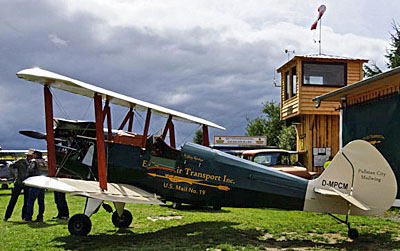 #7 — Kiebitz (151 flying) — The biplane from designer Michael Platzer has a huge following in Germany. Hardly any other ultralight gives so much fun flying in an open cockpit. To win this jewel, owners must either build it or seek one from the used market. Only plans and individual parts are offered, however, for many the effort is worthwhile. |||| Kiebitz has no U.S. market presence yet given the interest in vintage designs like the many Cubalikes, perhaps some interest can develop. On the other hand, Americans already have many choices in the world of homebuilt vintage aircraft so we may never see a Kiebitz in the USA.
#7 — Kiebitz (151 flying) — The biplane from designer Michael Platzer has a huge following in Germany. Hardly any other ultralight gives so much fun flying in an open cockpit. To win this jewel, owners must either build it or seek one from the used market. Only plans and individual parts are offered, however, for many the effort is worthwhile. |||| Kiebitz has no U.S. market presence yet given the interest in vintage designs like the many Cubalikes, perhaps some interest can develop. On the other hand, Americans already have many choices in the world of homebuilt vintage aircraft so we may never see a Kiebitz in the USA.
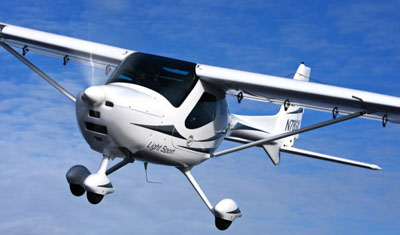 #6 — Remos GX (166 flying) — Remos Aircraft started in the mid-1990s with the introduction of its composite high wing G-3 that became popular with many ultralight pilots. Professionally produced and easy to fly this ultralight earned an excellent reputation in the industry. Several years ago, the company offered an updated GX version, which was proceeding toward European LSA approval [a more complicated and costly process than in the USA]. After a difficult time in recent years, production restarted in 2013. |||| Even after stalling badly following a tremendous promotional push, Remos still owns the #7 spot in the American LSA ranking, although reports of added financial challenge continue to dog the company. The airplane was marketed more heavily than any other LSA brand and won many happy customers.
#6 — Remos GX (166 flying) — Remos Aircraft started in the mid-1990s with the introduction of its composite high wing G-3 that became popular with many ultralight pilots. Professionally produced and easy to fly this ultralight earned an excellent reputation in the industry. Several years ago, the company offered an updated GX version, which was proceeding toward European LSA approval [a more complicated and costly process than in the USA]. After a difficult time in recent years, production restarted in 2013. |||| Even after stalling badly following a tremendous promotional push, Remos still owns the #7 spot in the American LSA ranking, although reports of added financial challenge continue to dog the company. The airplane was marketed more heavily than any other LSA brand and won many happy customers.
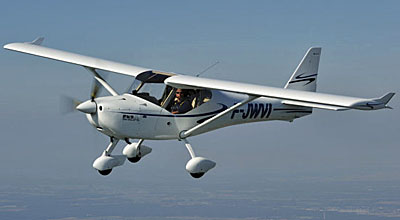 #5 — FK 9 (202 flying) — With the FK 9 Peter and his father Otto Funk [who died in 2014] presented their first FK 9 at Aero 1989 as one of the first "cabin class" ultralights replacing earlier aircraft that were far more basic. Today, the high wing is a model of success that is enjoys great popularity with many clubs and flight schools in Germany. New model innovations ensure continued success in the market. Older models are on the second hand market remain extremely popular. Today, the aircraft is built by FK-Lightplanes in Poland. |||| FK 9 enjoys market presence and current representation by
#5 — FK 9 (202 flying) — With the FK 9 Peter and his father Otto Funk [who died in 2014] presented their first FK 9 at Aero 1989 as one of the first "cabin class" ultralights replacing earlier aircraft that were far more basic. Today, the high wing is a model of success that is enjoys great popularity with many clubs and flight schools in Germany. New model innovations ensure continued success in the market. Older models are on the second hand market remain extremely popular. Today, the aircraft is built by FK-Lightplanes in Poland. |||| FK 9 enjoys market presence and current representation by 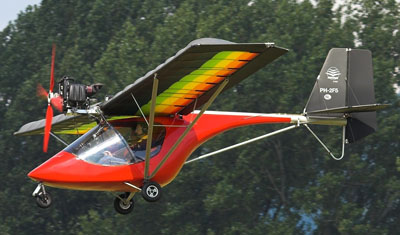 #4 — C22 (229 flying) — Germany's ultralight classic C22 has a loyal following to this day. Since the 1980s the model has stayed on the market and many still authorized aircraft remain active. From today's perspective, flight characteristics and comfort may seem rather spartan, but real ultralight fans love the original flying with the proven tube & Dacron construction from Comco Ikarus based in the south of Germany. [Note that Comco Ikarus also owns the #1 position in the market making this company Germany's clear leader after many years.] |||| No C22s are flying in the USA, nor has the German market leading C42 found many customers. The C22 is very similar to the
#4 — C22 (229 flying) — Germany's ultralight classic C22 has a loyal following to this day. Since the 1980s the model has stayed on the market and many still authorized aircraft remain active. From today's perspective, flight characteristics and comfort may seem rather spartan, but real ultralight fans love the original flying with the proven tube & Dacron construction from Comco Ikarus based in the south of Germany. [Note that Comco Ikarus also owns the #1 position in the market making this company Germany's clear leader after many years.] |||| No C22s are flying in the USA, nor has the German market leading C42 found many customers. The C22 is very similar to the 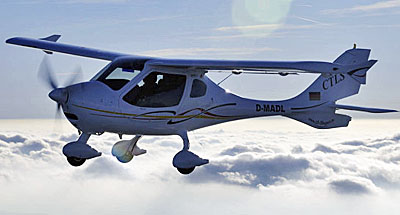 #3 — CTLS (243 flying) — From generation to generation the CT series from
#3 — CTLS (243 flying) — From generation to generation the CT series from 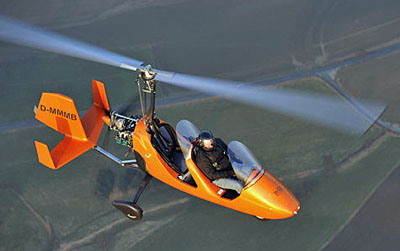 #2 — MTO Sport (346 flying) — This gyroplane is a case of the right product at the right time. In 2004, when the first MT-03 was first built, CEO Otmar Birkner had no idea he would trigger a surprising boom with gyroplanes. Many pilots love to be in the open cockpit feel the wind in your hair and to experience the flying dynamics of an autogyro. Today AutoGyro from the north of Germany is the world's leader in the gyro business. The MT-03 and its successor MTO Sport end up together in second place in Germany's registration statistics. |||| AutoGyro and other gyro providers operate in America but as FAA cannot seem to overcome their own rules, these popular planes must be built as Experimental Amateur Built (the 51% rule). If FAA ever catches up with the trend, look for more gyros to be flying as Americans seems to like the fully enclosed two seaters in tandem and side by side form.
#2 — MTO Sport (346 flying) — This gyroplane is a case of the right product at the right time. In 2004, when the first MT-03 was first built, CEO Otmar Birkner had no idea he would trigger a surprising boom with gyroplanes. Many pilots love to be in the open cockpit feel the wind in your hair and to experience the flying dynamics of an autogyro. Today AutoGyro from the north of Germany is the world's leader in the gyro business. The MT-03 and its successor MTO Sport end up together in second place in Germany's registration statistics. |||| AutoGyro and other gyro providers operate in America but as FAA cannot seem to overcome their own rules, these popular planes must be built as Experimental Amateur Built (the 51% rule). If FAA ever catches up with the trend, look for more gyros to be flying as Americans seems to like the fully enclosed two seaters in tandem and side by side form. 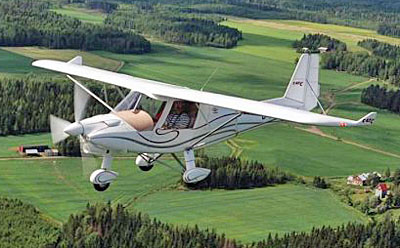 #1 — C42 (582 flying) — Germany's most popular ultralight comes from the south of Germany. C42 by Comco Ikarus secures first place with 582 licensed copies of this tube & Dacron, high wing monoplane. It has been refined repeatedly over the years and currently the manufacturer produces three versions: C42A, C42B and C42C. The aircraft is very easy to use and is widely used by flying clubs and their flight schools. |||| The clear king of ultralights in Germany has 70% more aircraft registered than the number two producer and represents more than 25% of Germany's Top-10, a stronger position than even the top two U.S. LSA producers put together. While Comco Ikarus has attempted to gain an American foothold, exhibiting at big events such as AirVenture in past years, the company has never found either the right representation nor market reception, though admittedly the U.S. market is crowded with great competition for customer attention.
As you can see, the Germany and American markets have their differences but also enjoy great similarity. Germany is one of the very strongest light aircraft markets outside the U.S., trailed in approximate order by the Czech Republic, France, Britain, Spain, Italy and others. The American market remains the world's largest for light aircraft of all types, but in the world of sport and recreation is closely trailed by other countries.
#1 — C42 (582 flying) — Germany's most popular ultralight comes from the south of Germany. C42 by Comco Ikarus secures first place with 582 licensed copies of this tube & Dacron, high wing monoplane. It has been refined repeatedly over the years and currently the manufacturer produces three versions: C42A, C42B and C42C. The aircraft is very easy to use and is widely used by flying clubs and their flight schools. |||| The clear king of ultralights in Germany has 70% more aircraft registered than the number two producer and represents more than 25% of Germany's Top-10, a stronger position than even the top two U.S. LSA producers put together. While Comco Ikarus has attempted to gain an American foothold, exhibiting at big events such as AirVenture in past years, the company has never found either the right representation nor market reception, though admittedly the U.S. market is crowded with great competition for customer attention.
As you can see, the Germany and American markets have their differences but also enjoy great similarity. Germany is one of the very strongest light aircraft markets outside the U.S., trailed in approximate order by the Czech Republic, France, Britain, Spain, Italy and others. The American market remains the world's largest for light aircraft of all types, but in the world of sport and recreation is closely trailed by other countries.